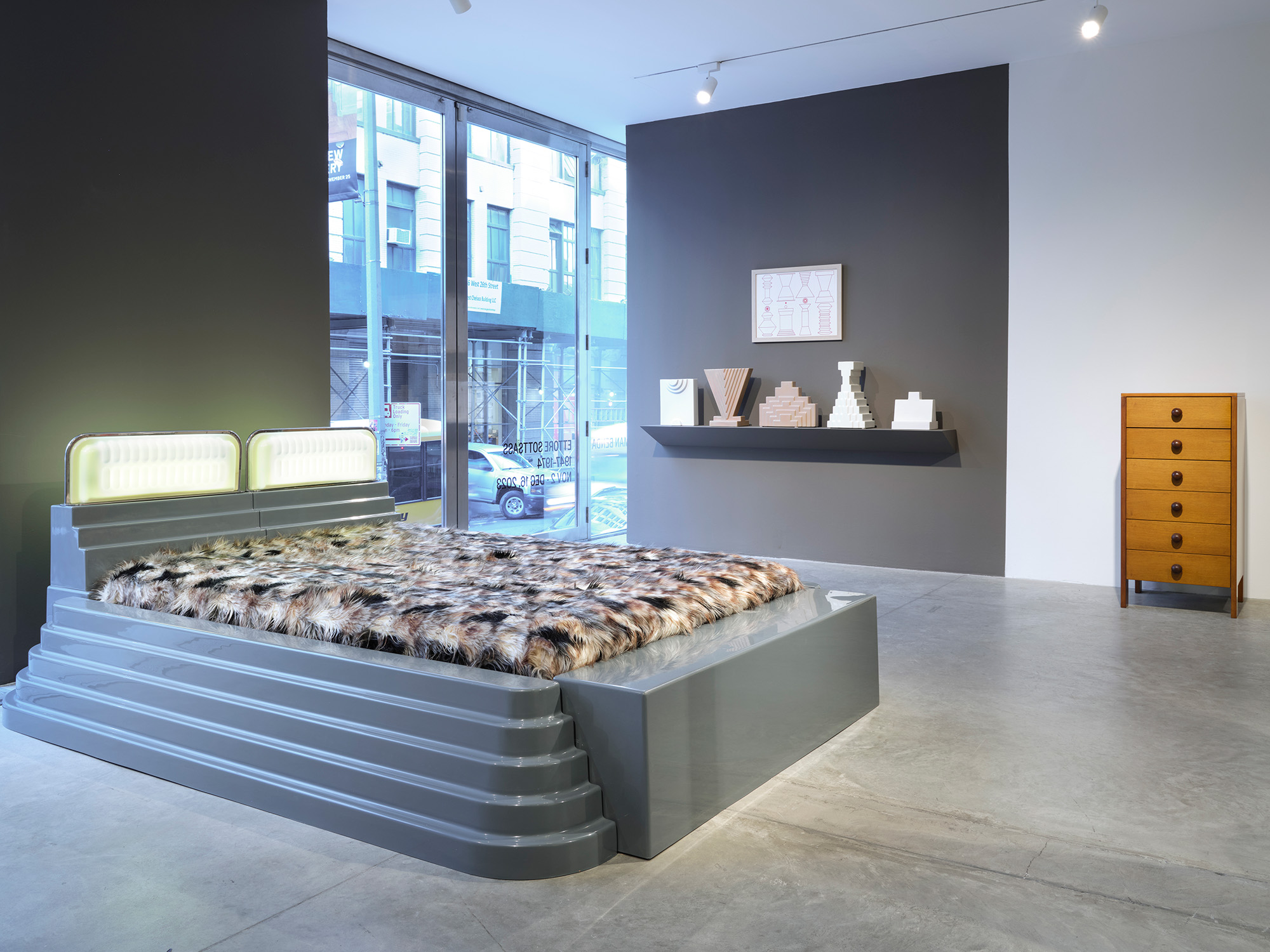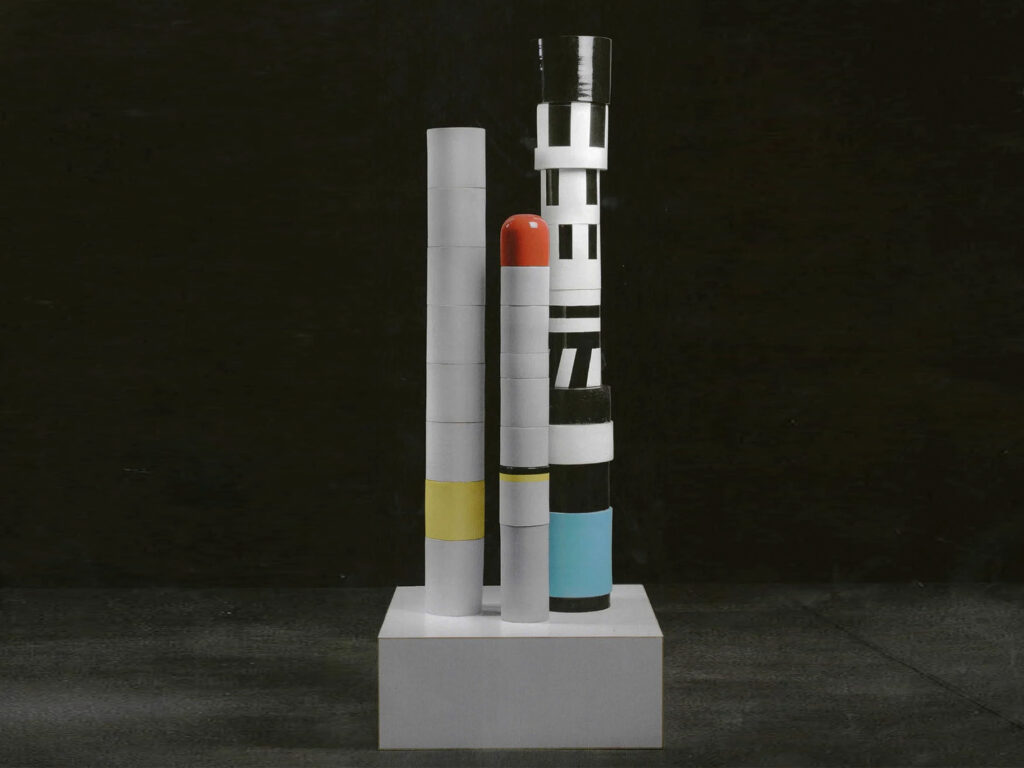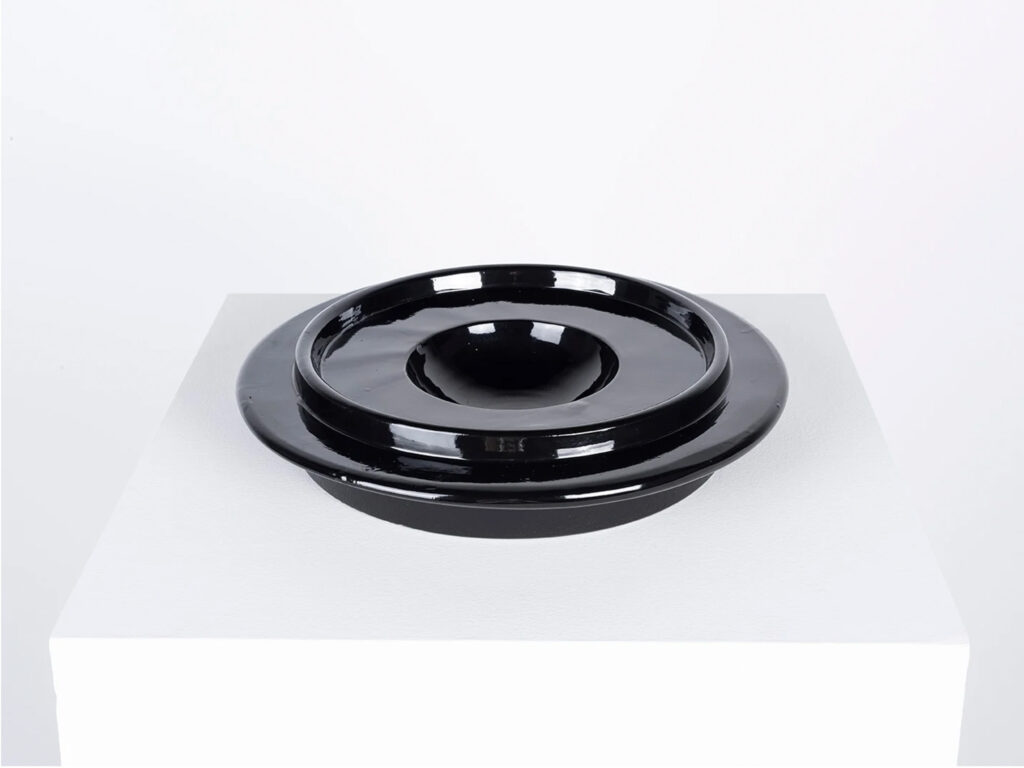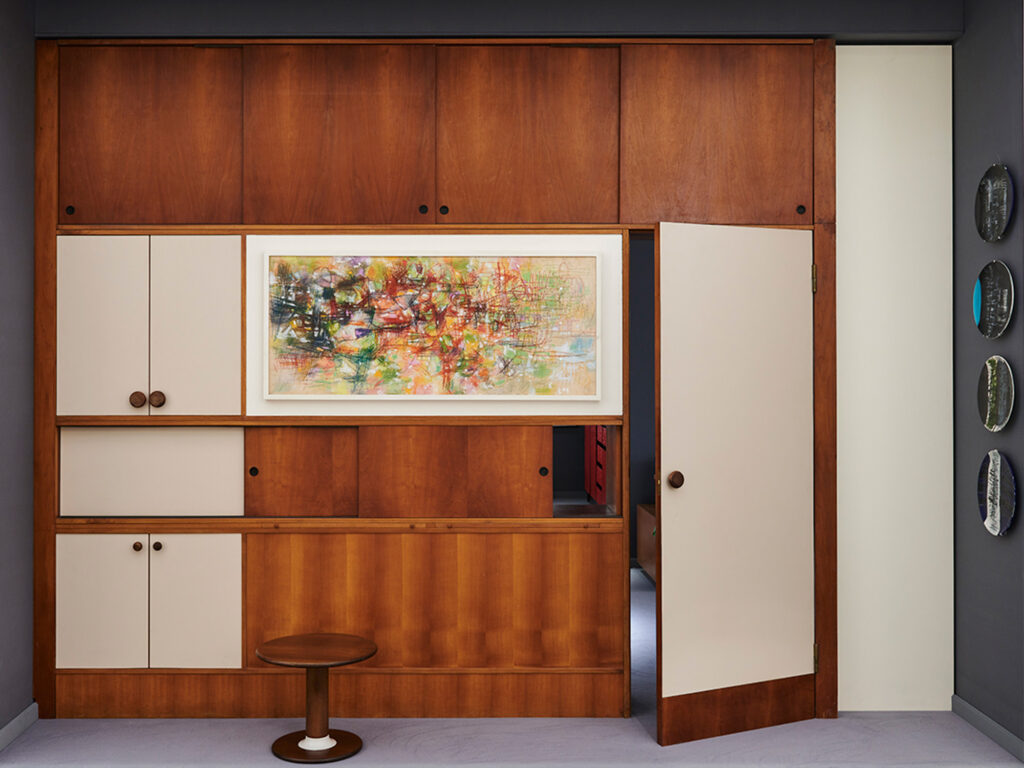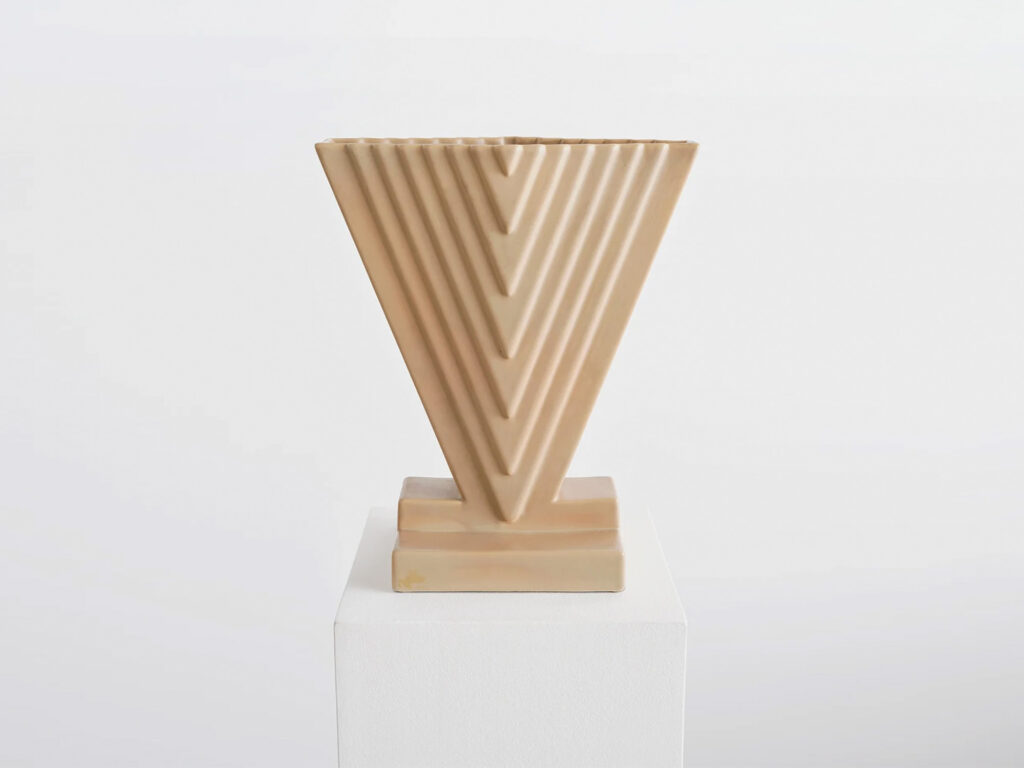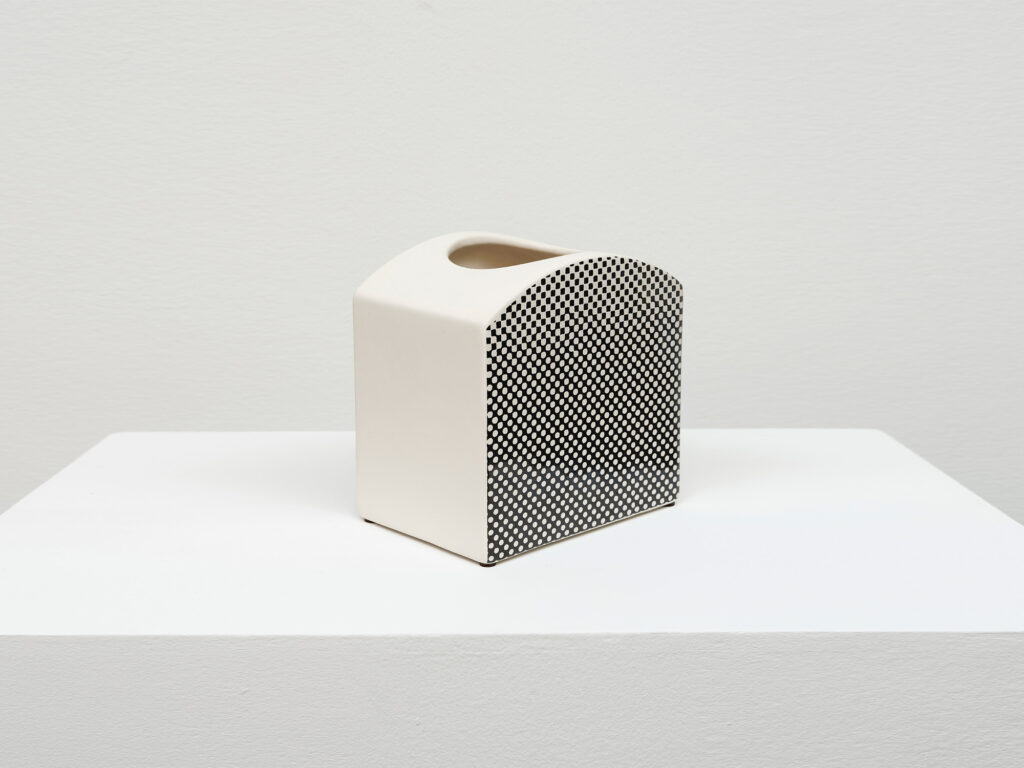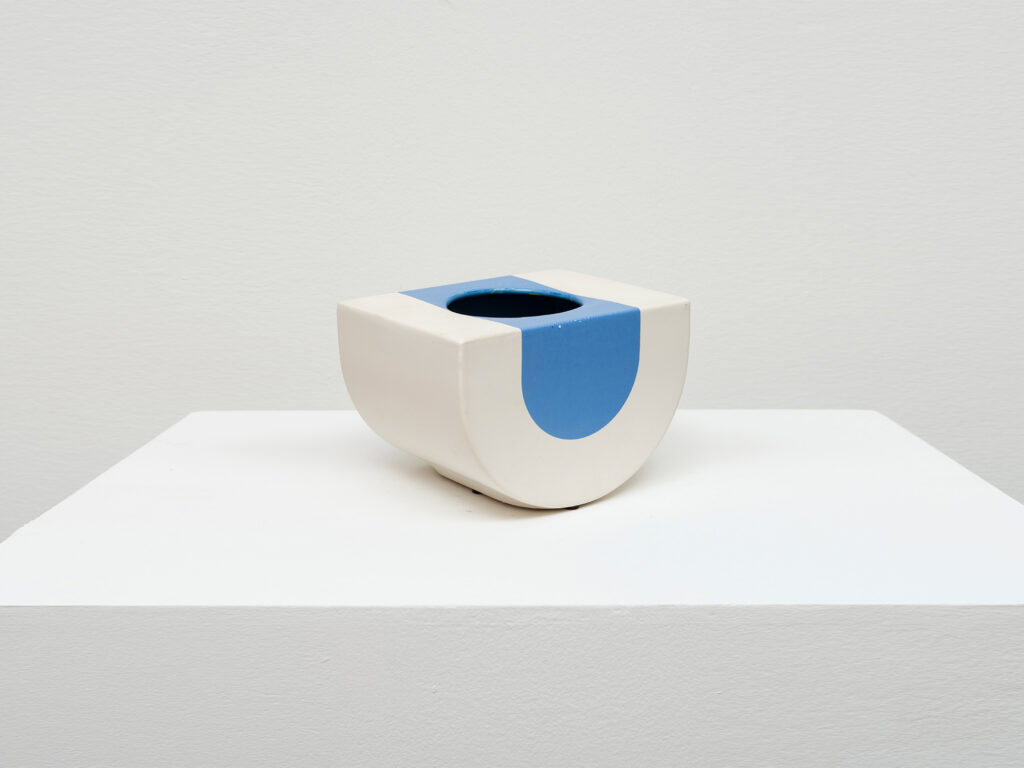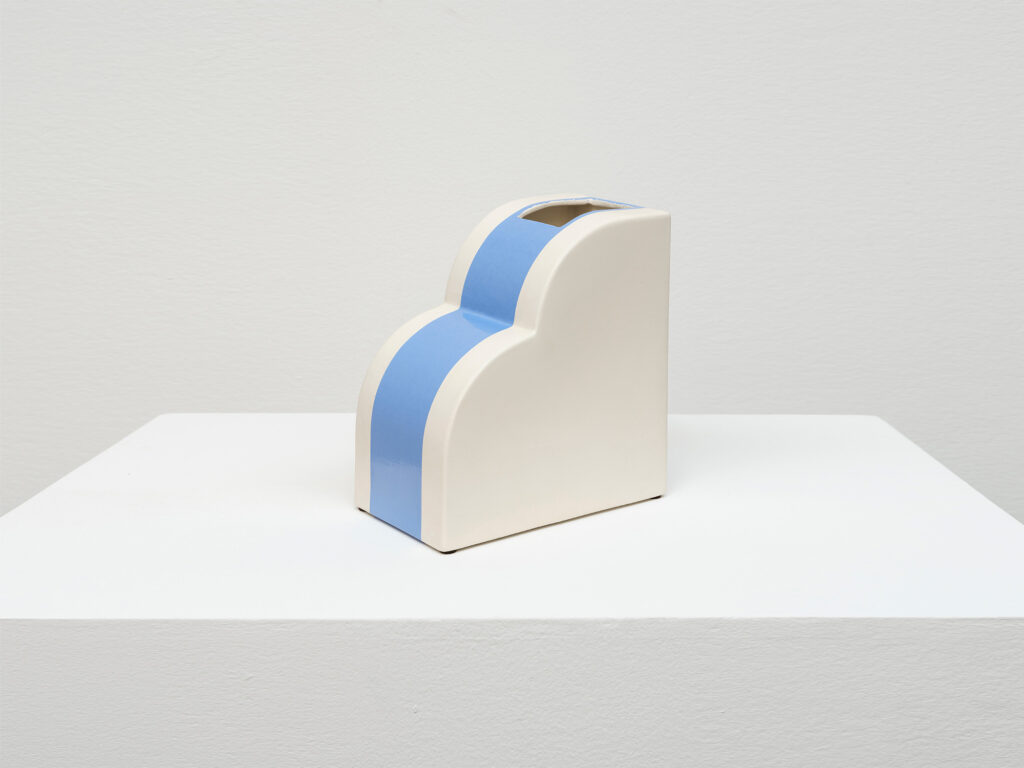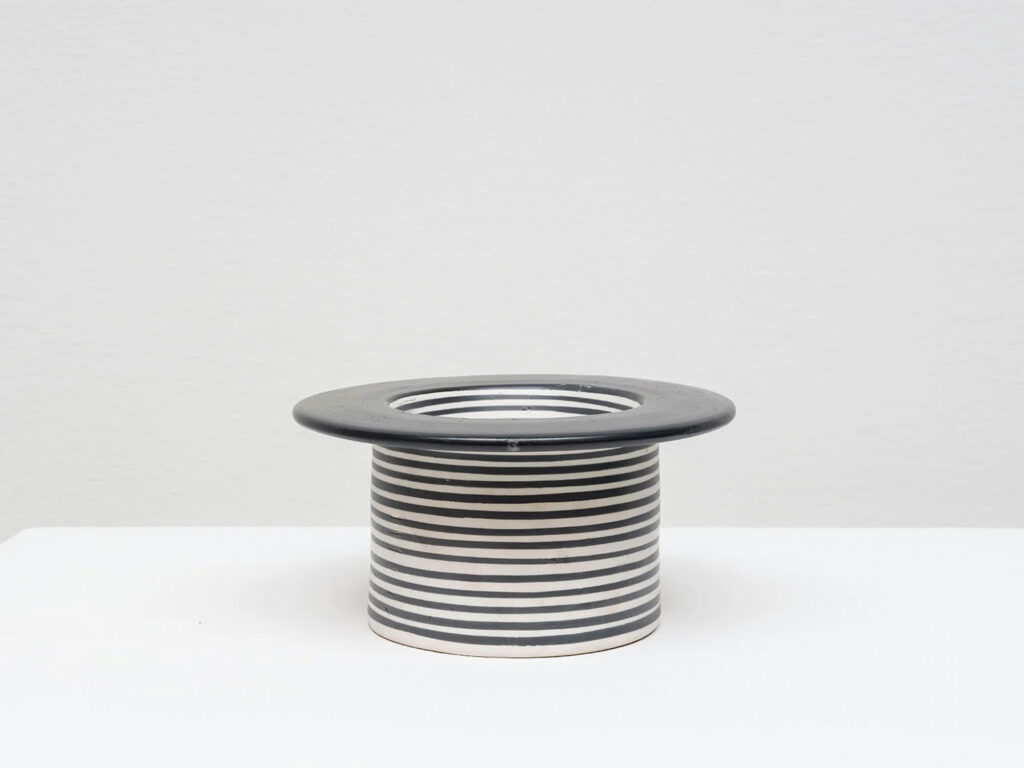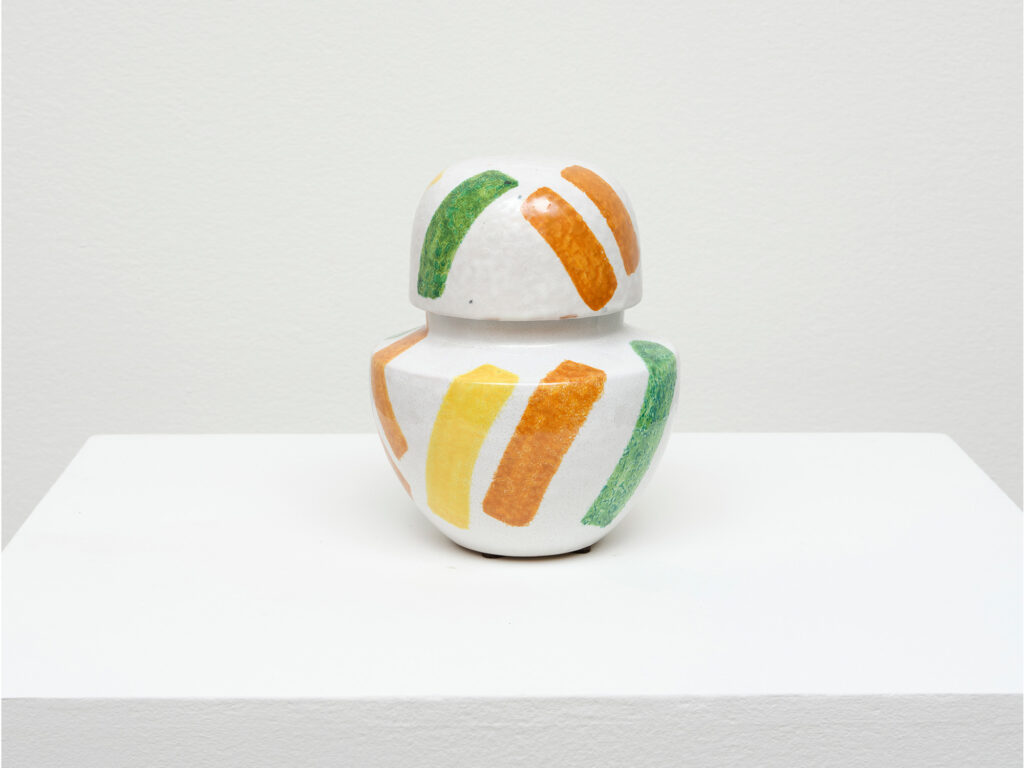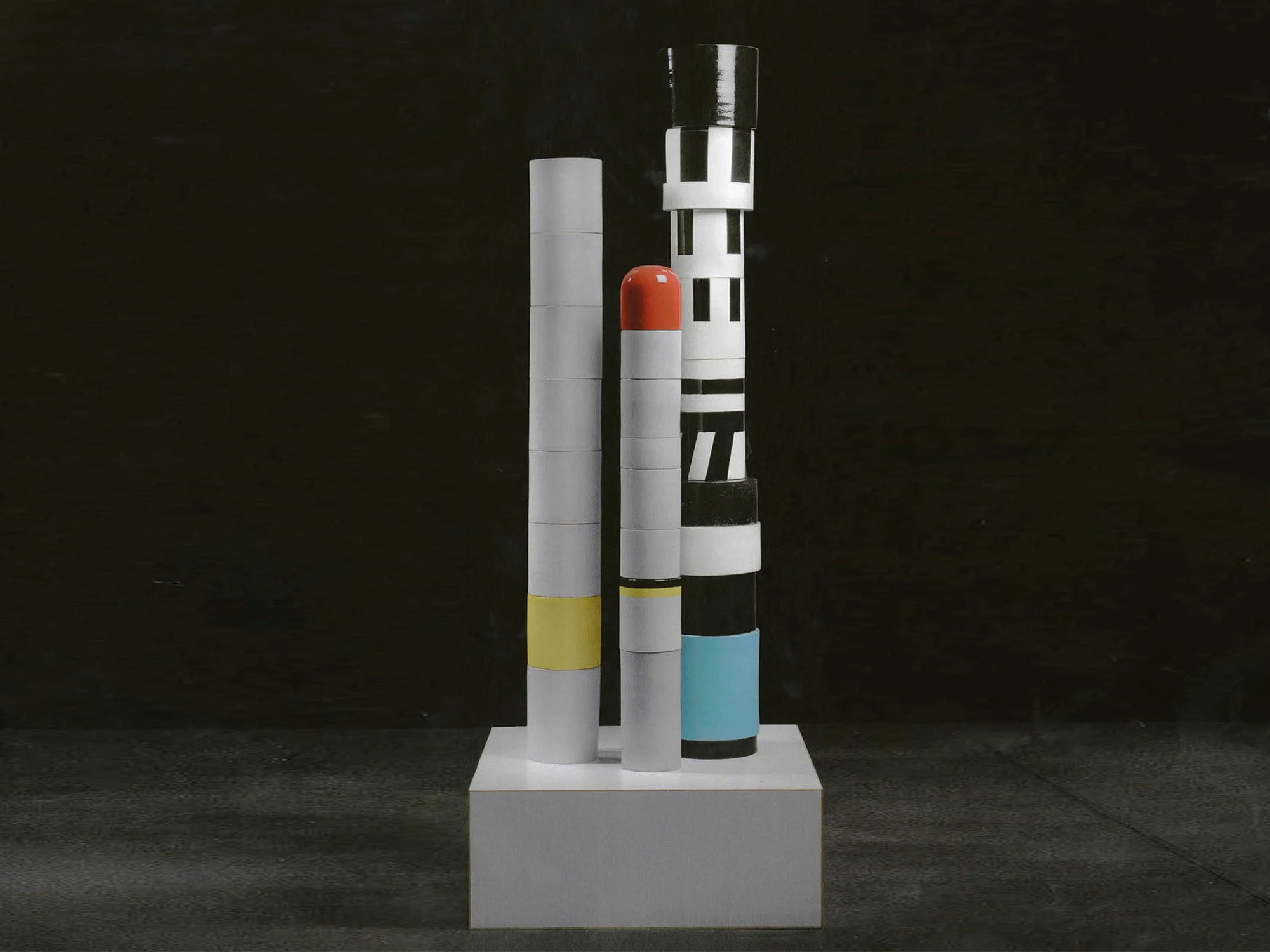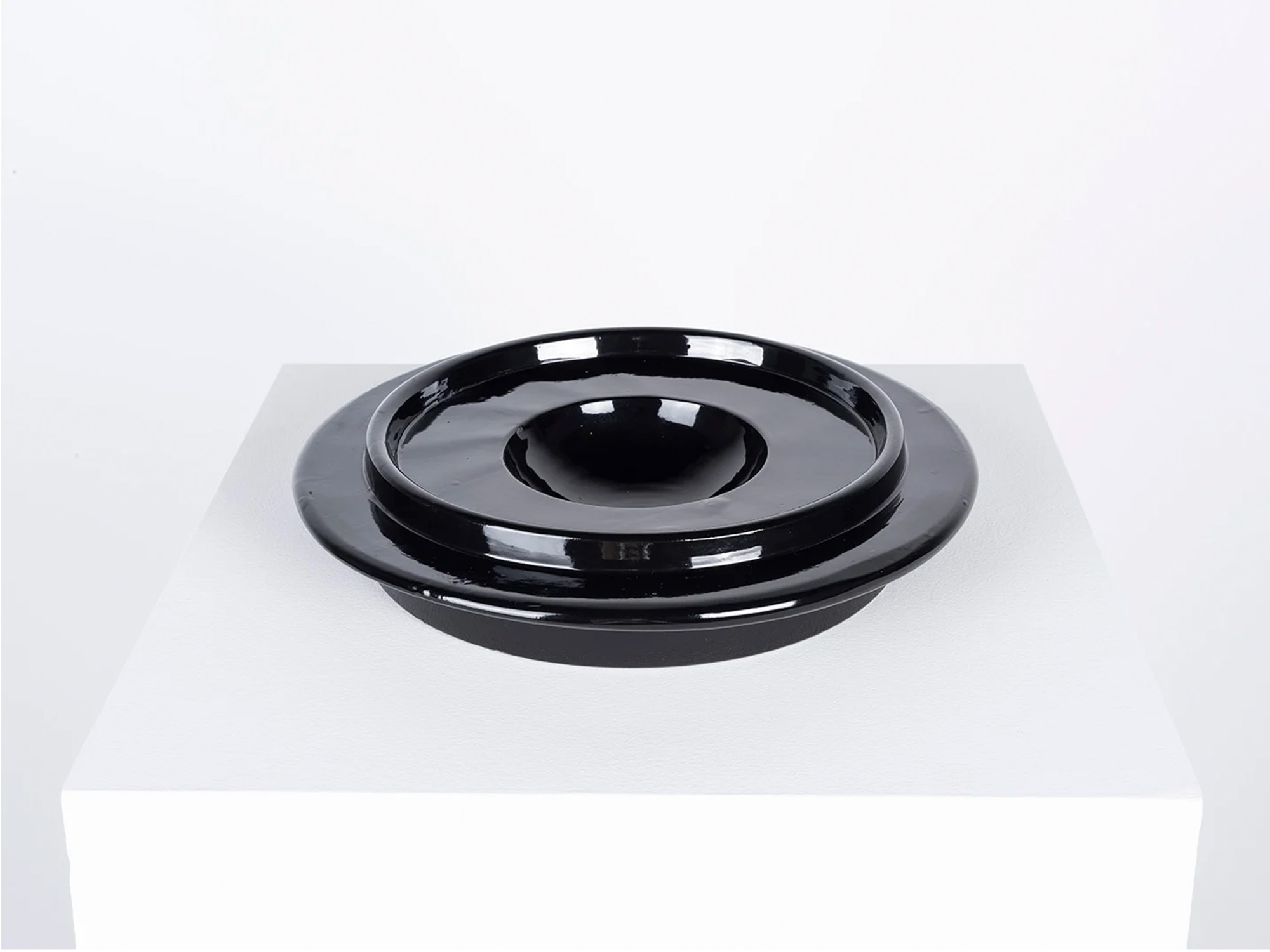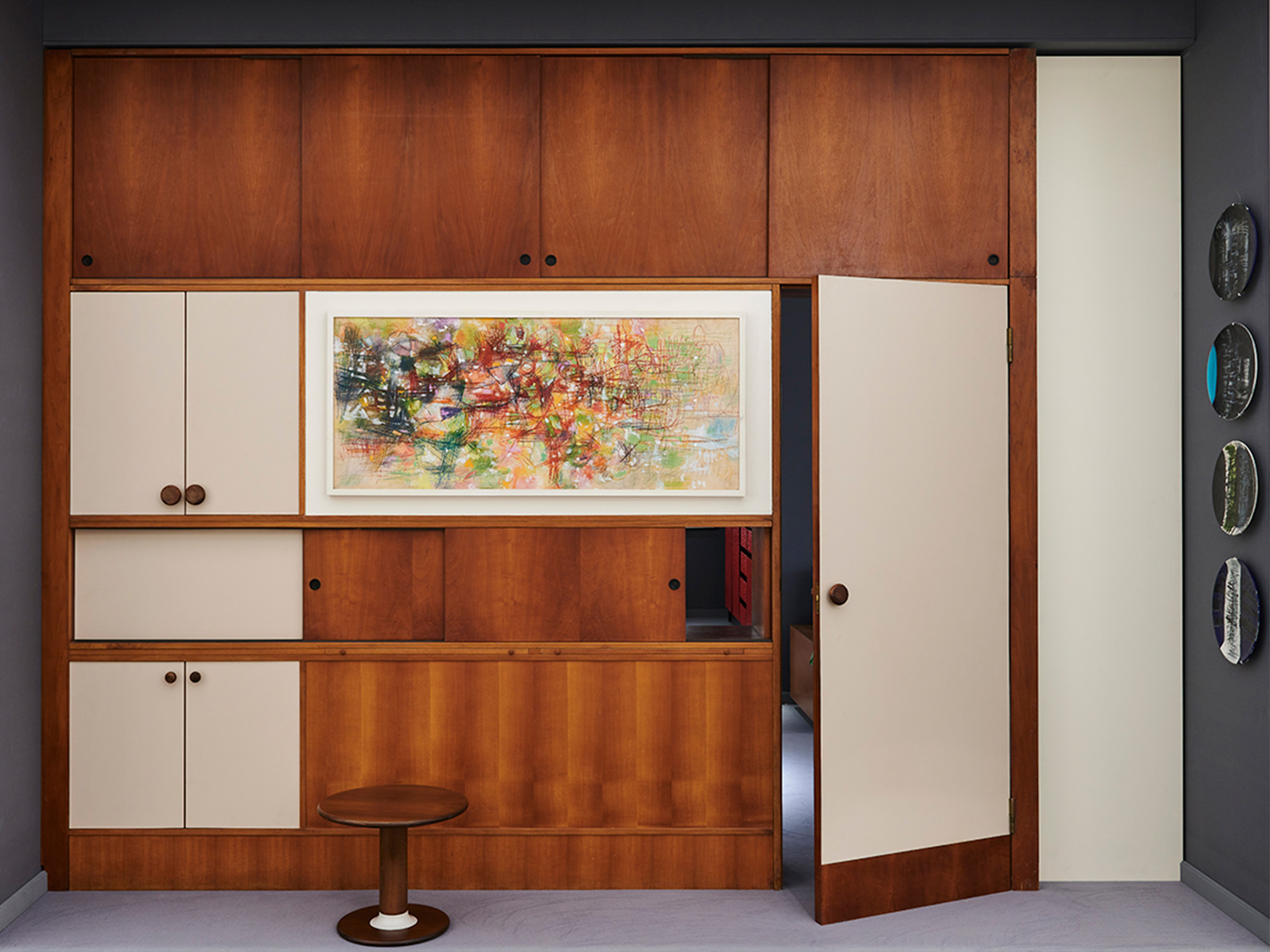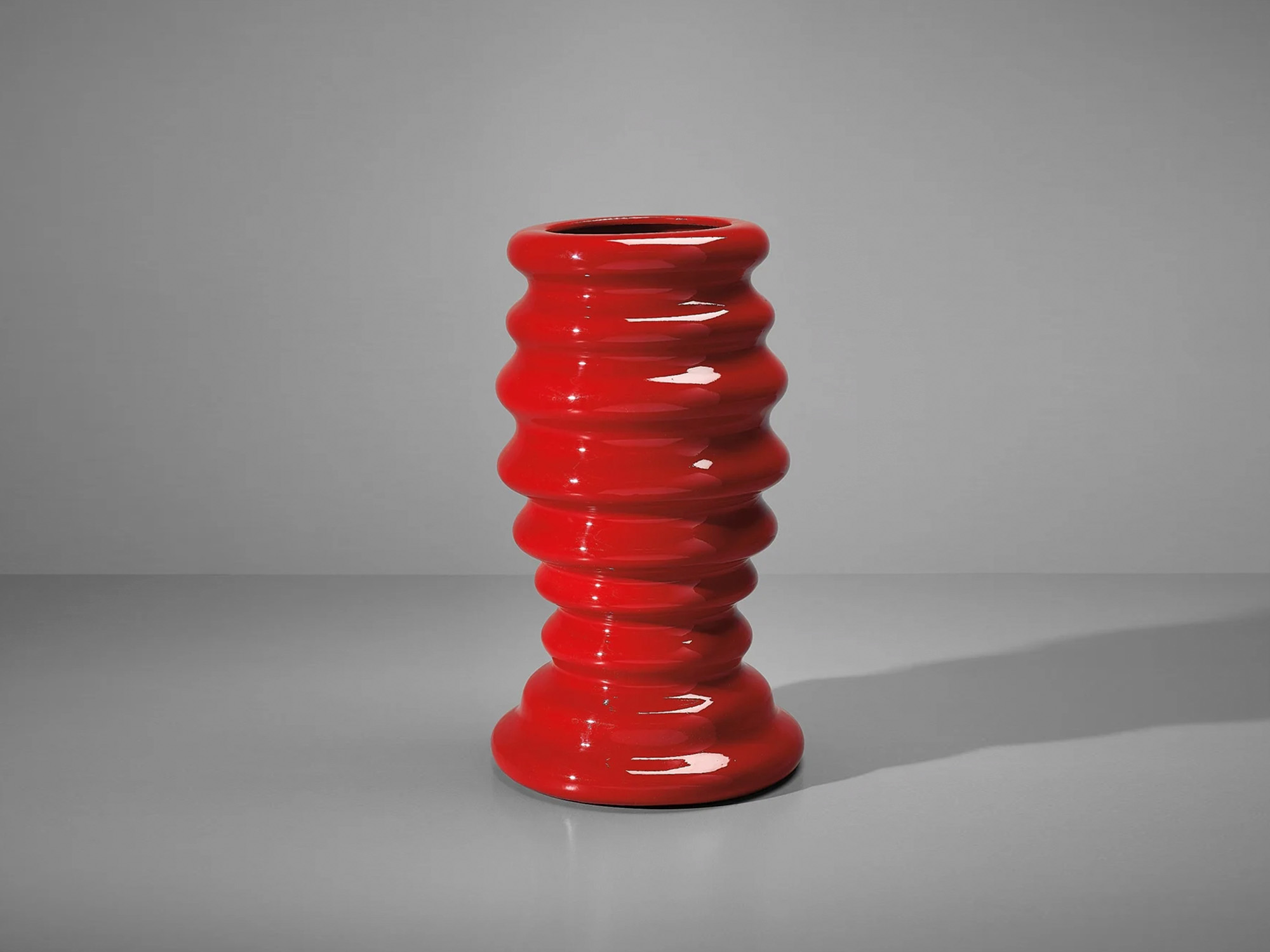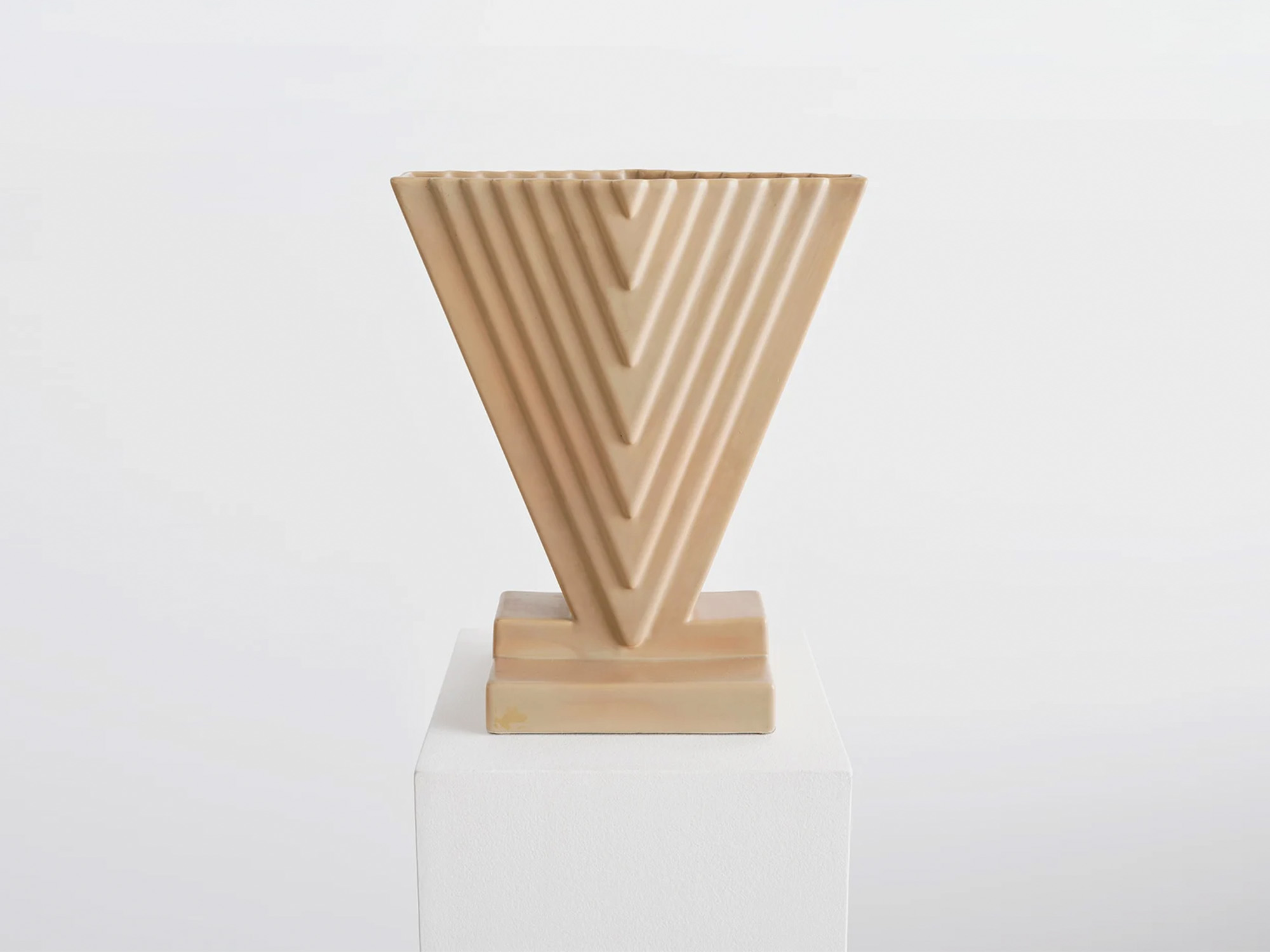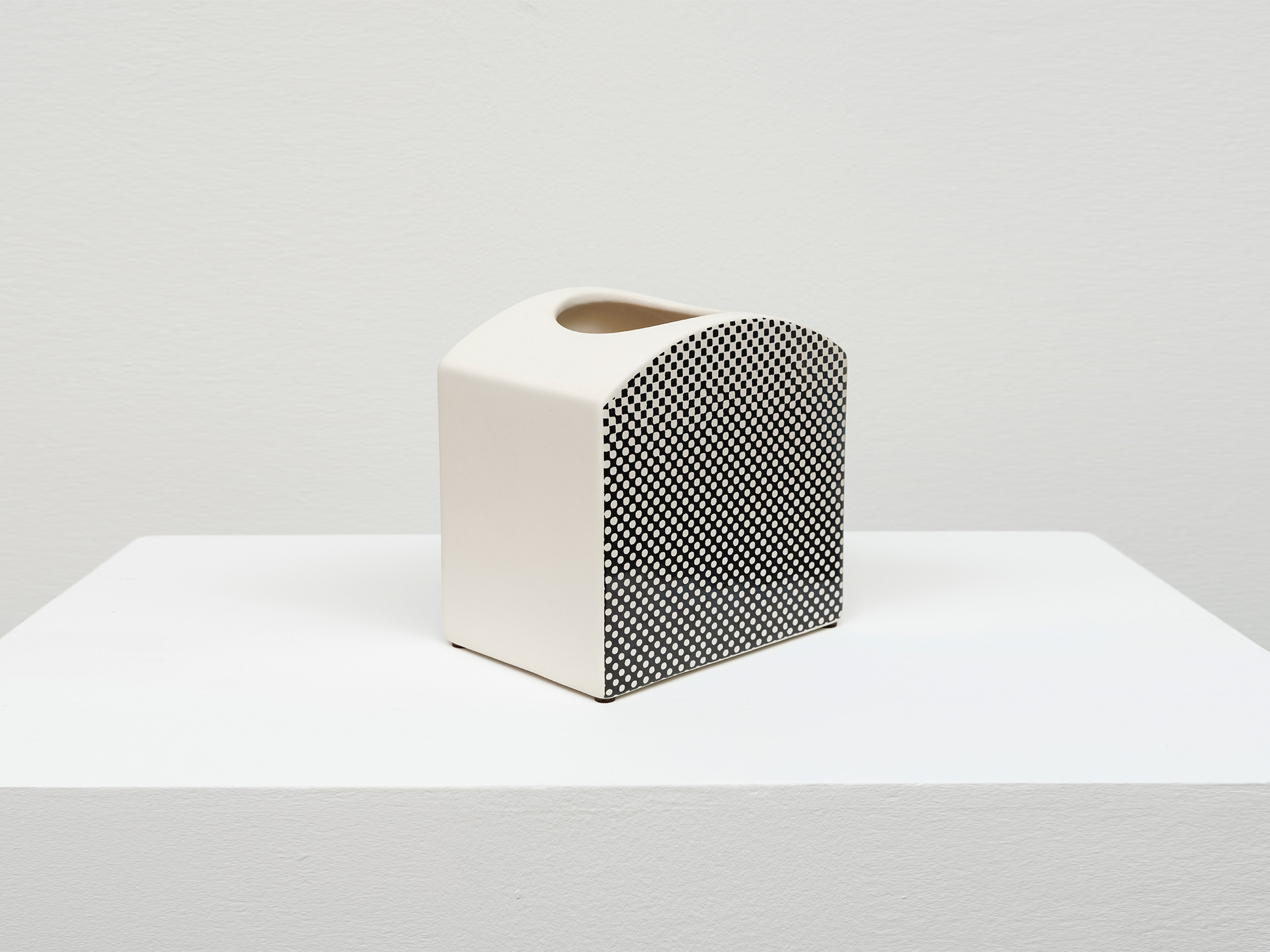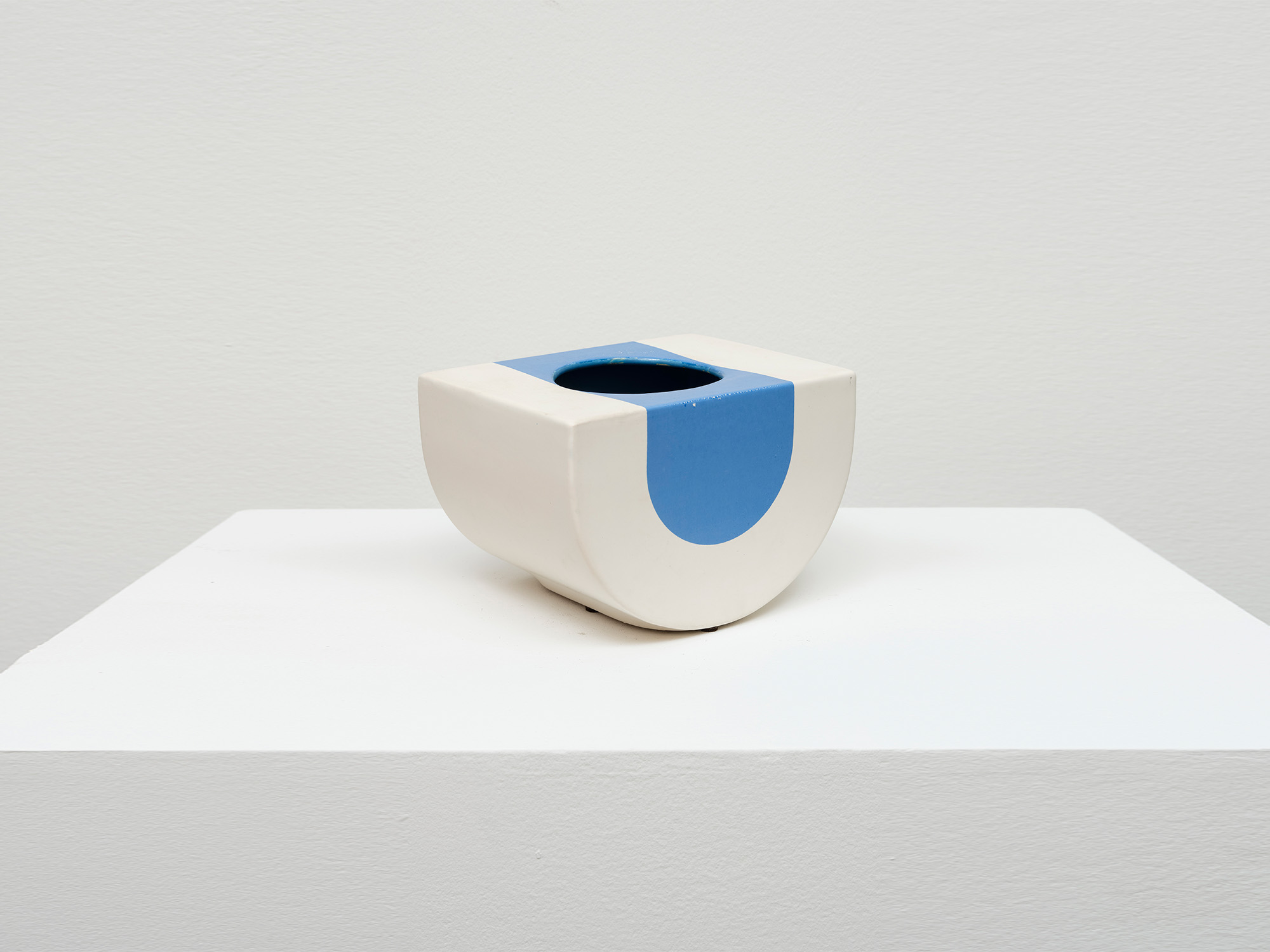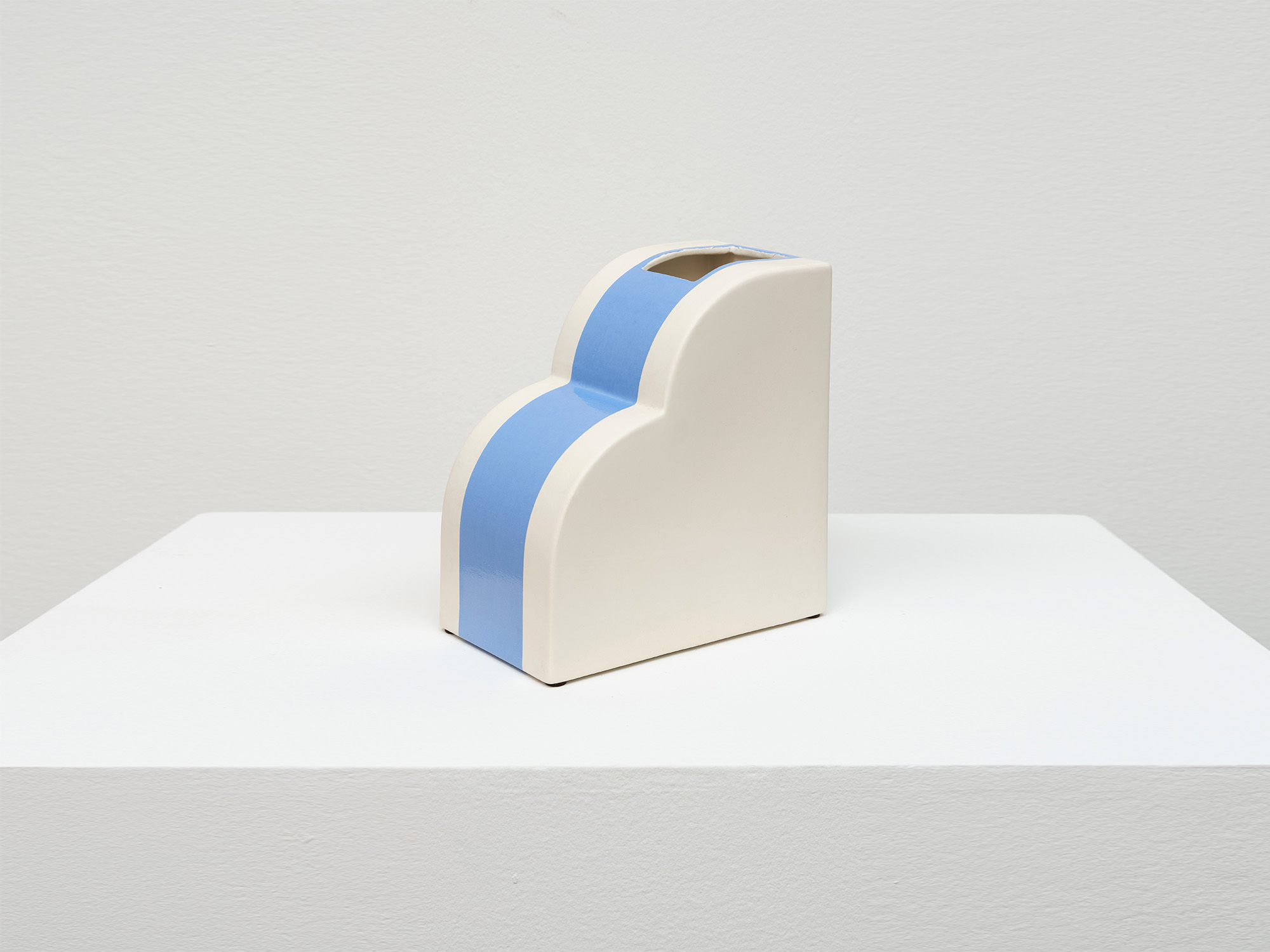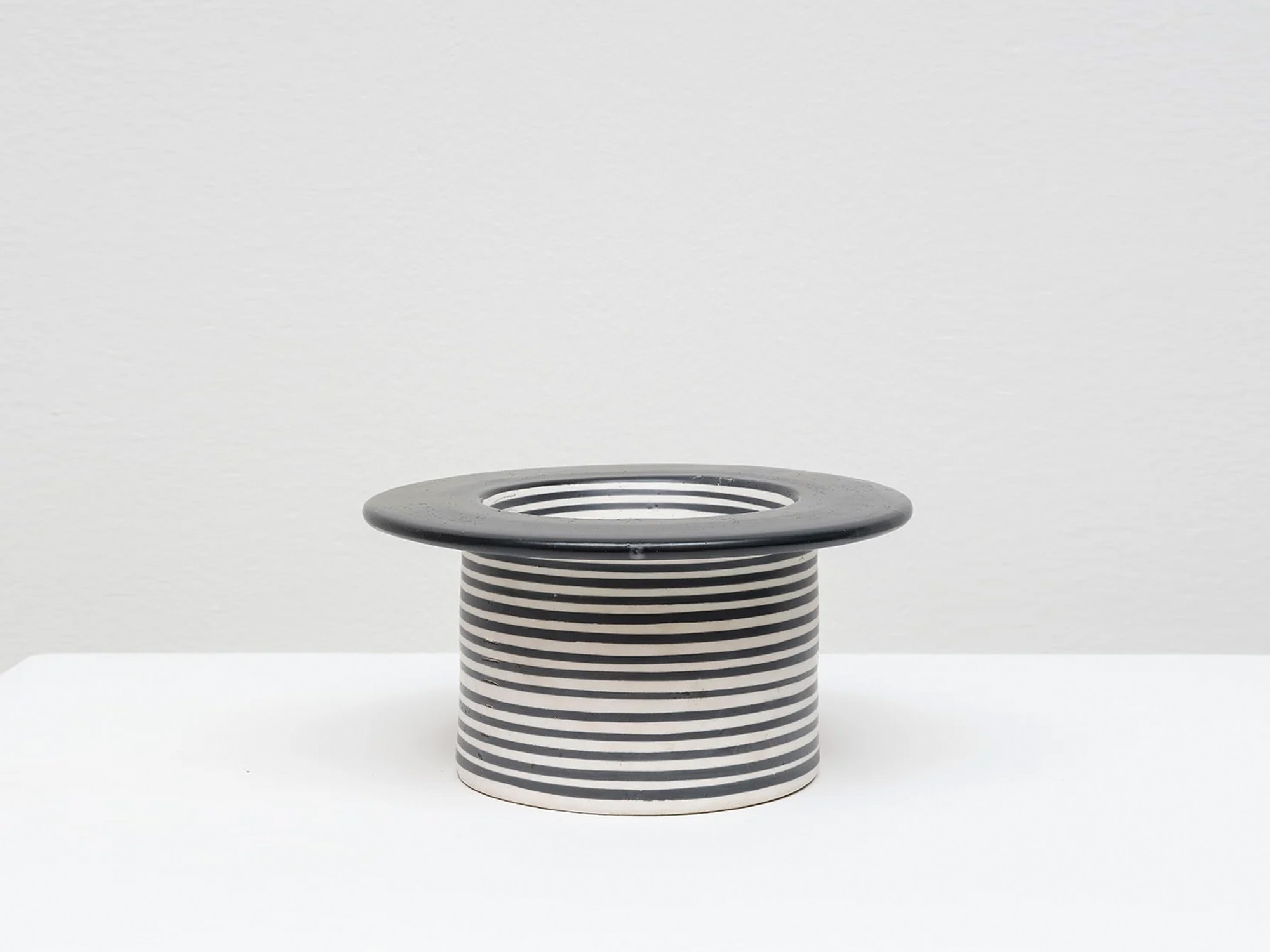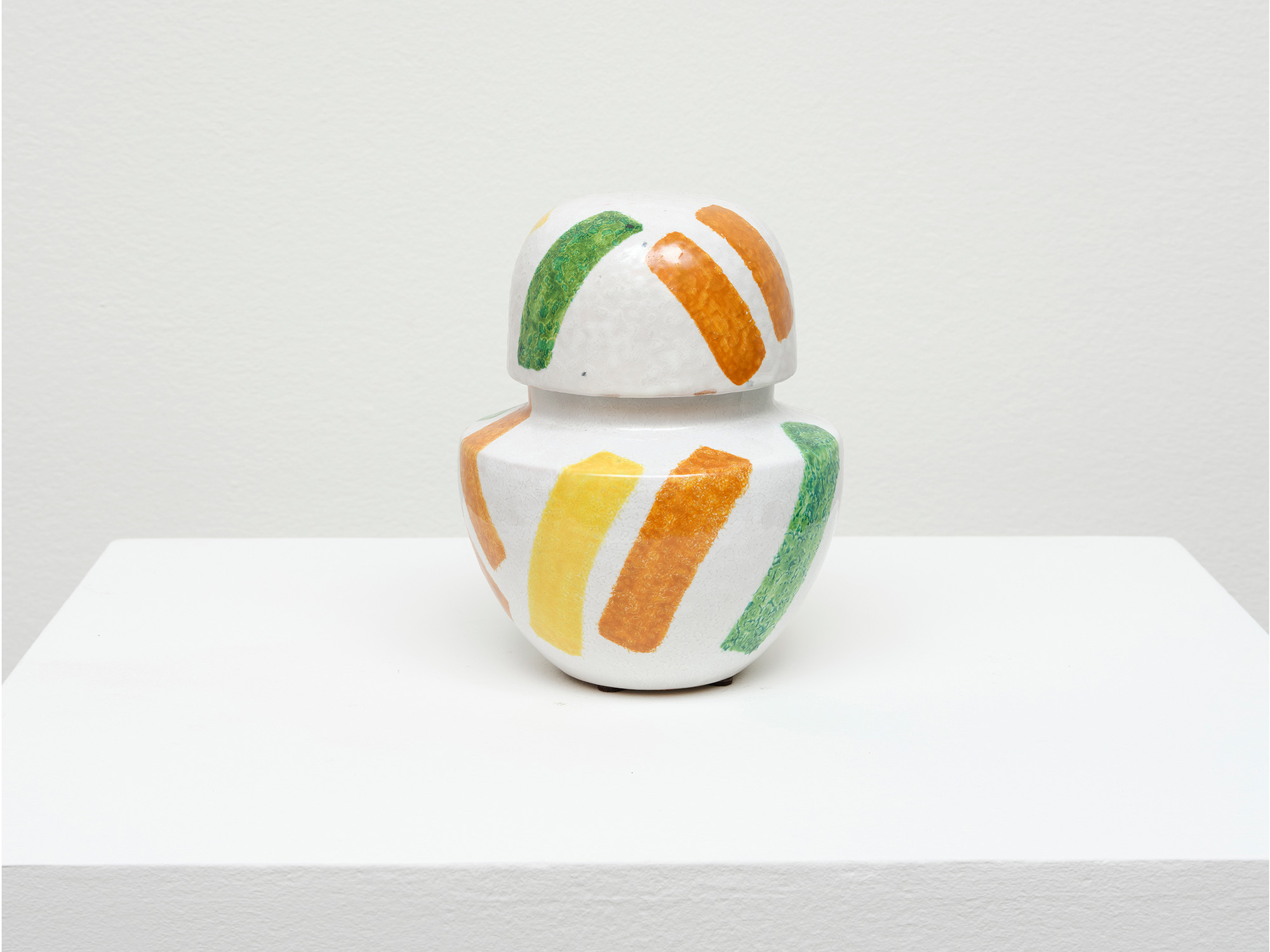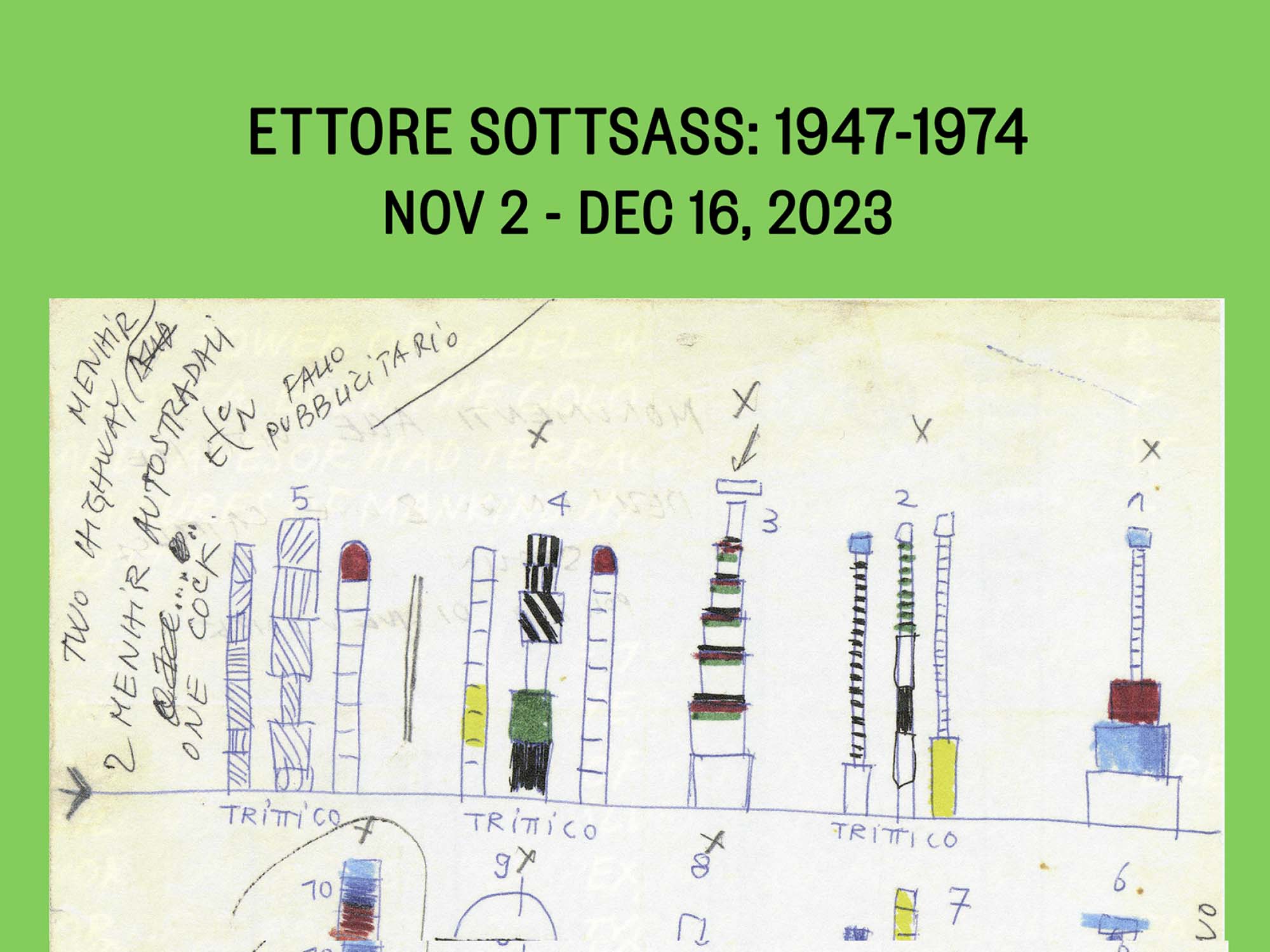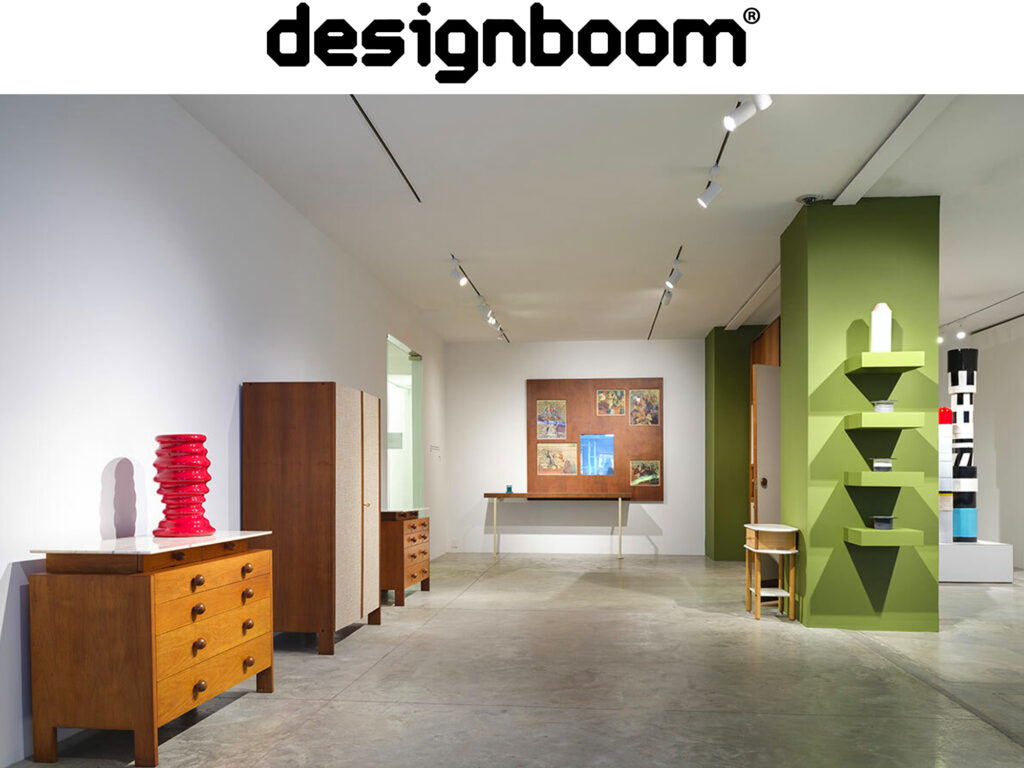On November 2, Friedman Benda presents Ettore Sottsass 1947-1974, the ninth solo show in an ongoing series dedicated to the expansive oeuvre of the groundbreaking Italian architect and designer Ettore Sottsass (1917-2007). As part of the gallery’s continuing commitment to survey Sottsass’ pioneering investigations across different media, the exhibition features distinct series of rare works supported by a range of original drawings and publications, serving as a gateway to understanding an extremely diverse and fertile period in Sottsass’ life.
Among Sottsass’ earliest projects was a collaboration with his father designing a shop interior for Negozio Cittone in Turin, for which he designed one of his very first furniture pieces. Starting in the mid-1950s, Sottsass embarked on a long and fruitful exchange with Poltronova – an artisanal furniture manufacturer based in Florence, Italy. “The point should be made very clear that the aim of the project was not to create a product,” stated Sottsass, “but to state and provoke ideas.” The furniture works on display reveal the evolution in Sottsass’ outlook over a quarter of a century, reflecting monumental changes in the possibilities of design during this seminal period. A unique architectural intervention, the large-scale Storage Partition (1965), comes from one of Sottsass’ most ambitious interiors designed for the Tufarelli residence in Capri (1965).
Included in the exhibition are rare ceramic works from Ettore Sottsass’ collection and estate, reflecting his use of the material to investigate new idioms and reflect influences form his travels in India and the US. On display is a large grouping of “Yantra” ceramics where interlocking geometric forms are informed by Indian religious symbols, Aztec sculptures, and jazz-age radio players. On view for the first time in a gallery context after showing at the Metropolitan Museum of Art and the ICA Miami, the 7-feet-tall Due Menhir e Grande Fallo (1966) is one of only four triptych totems created by Sottsass.
Shedding light on this far-reaching period of innovation, the exhibition provides a comprehensive view of this diverse and prolific first half of Ettore Sottsass’ career.
The exhibition is accompanied by a catalogue with an essay contributed by Simon Andrews.
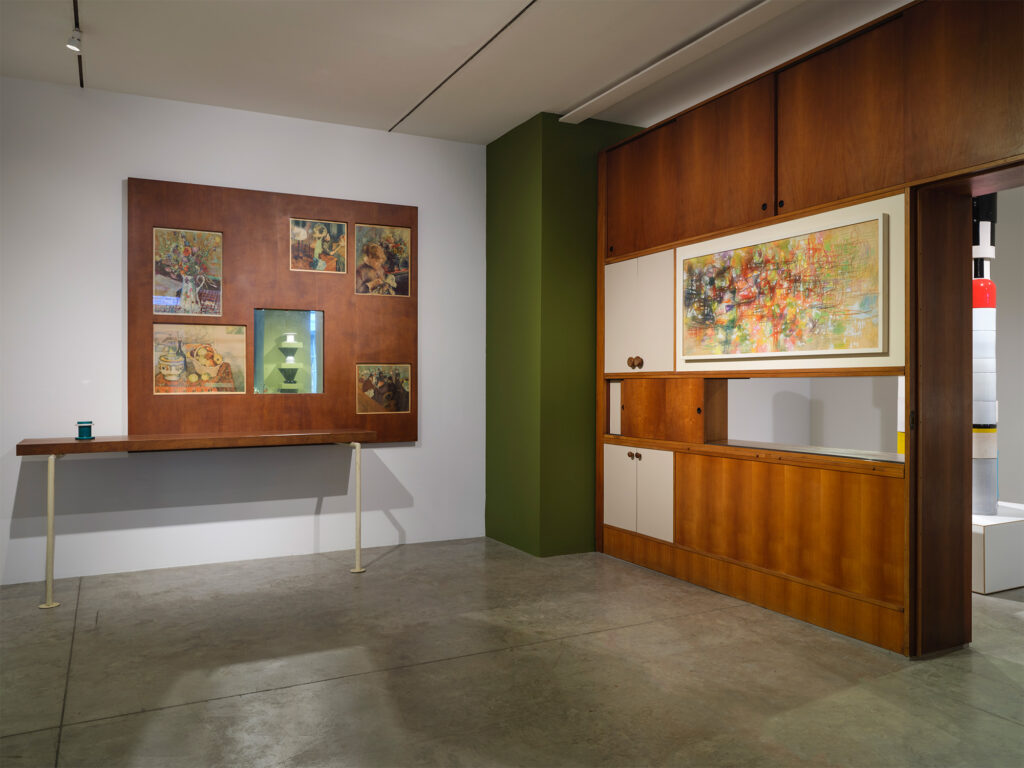
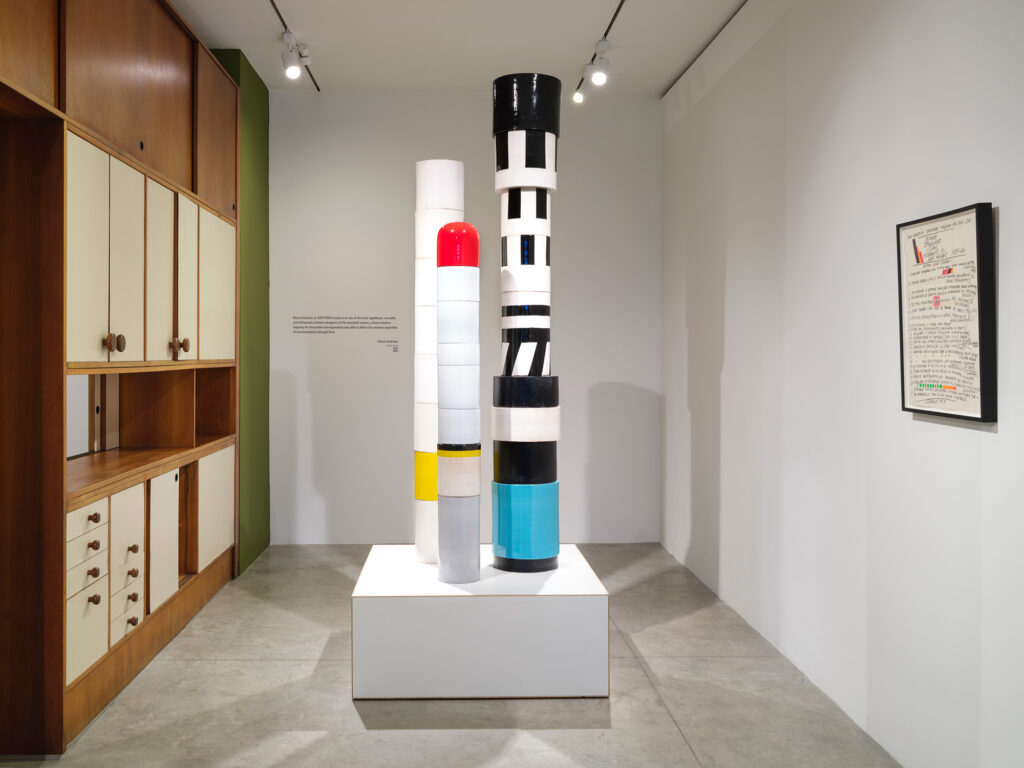
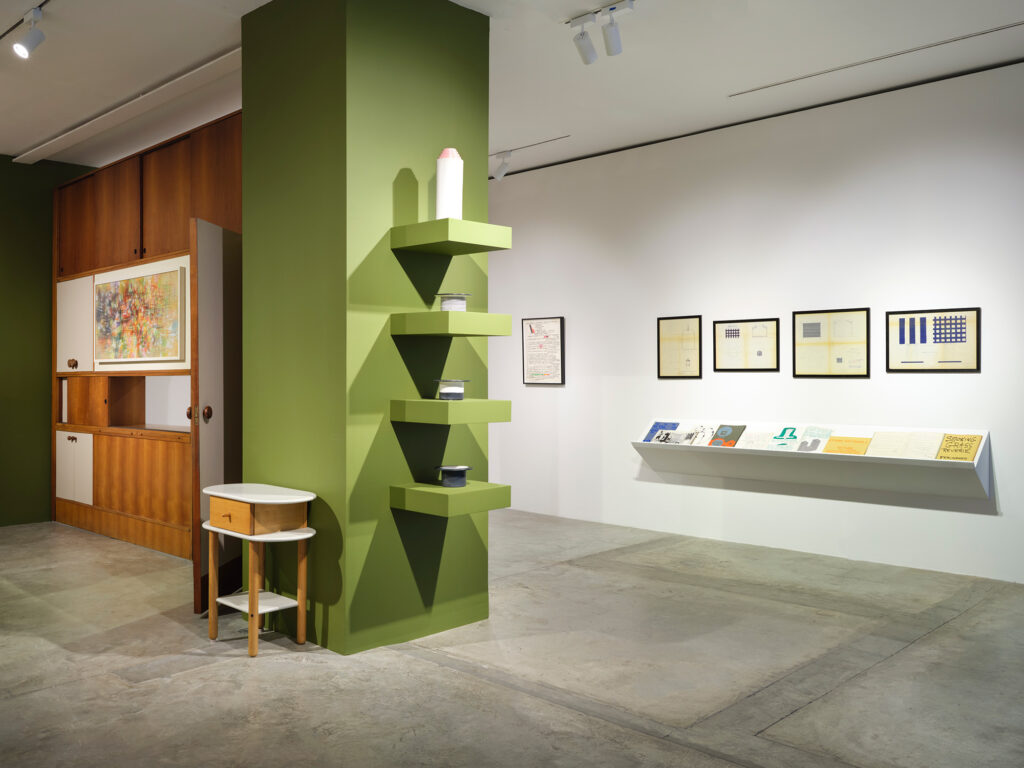
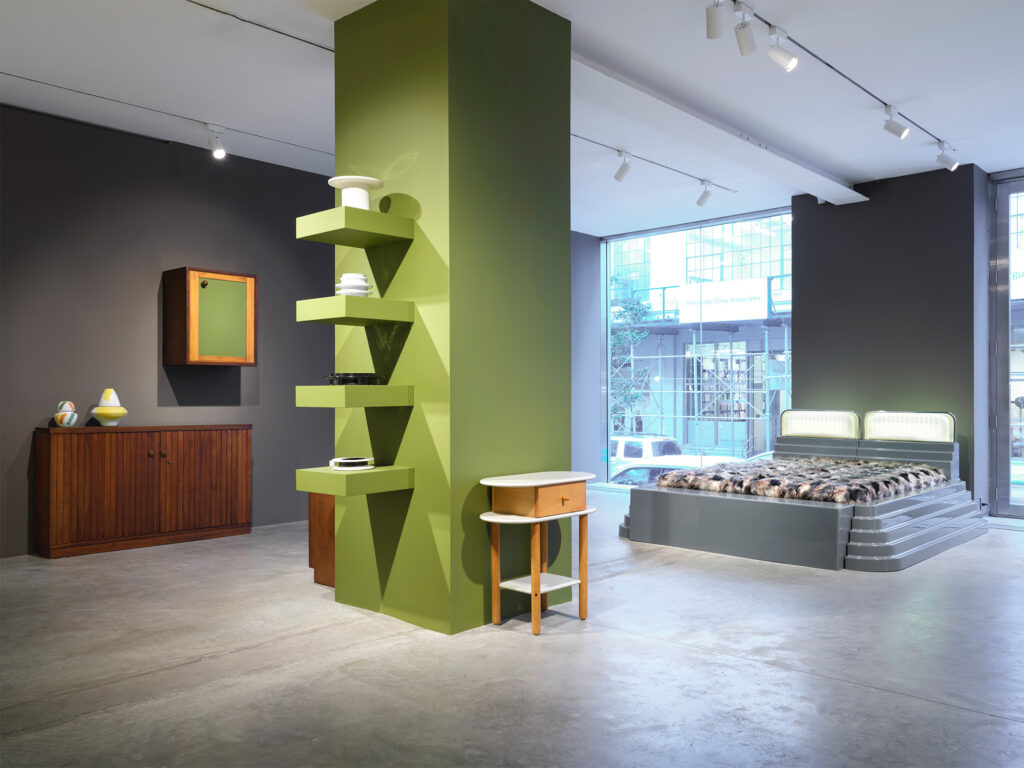
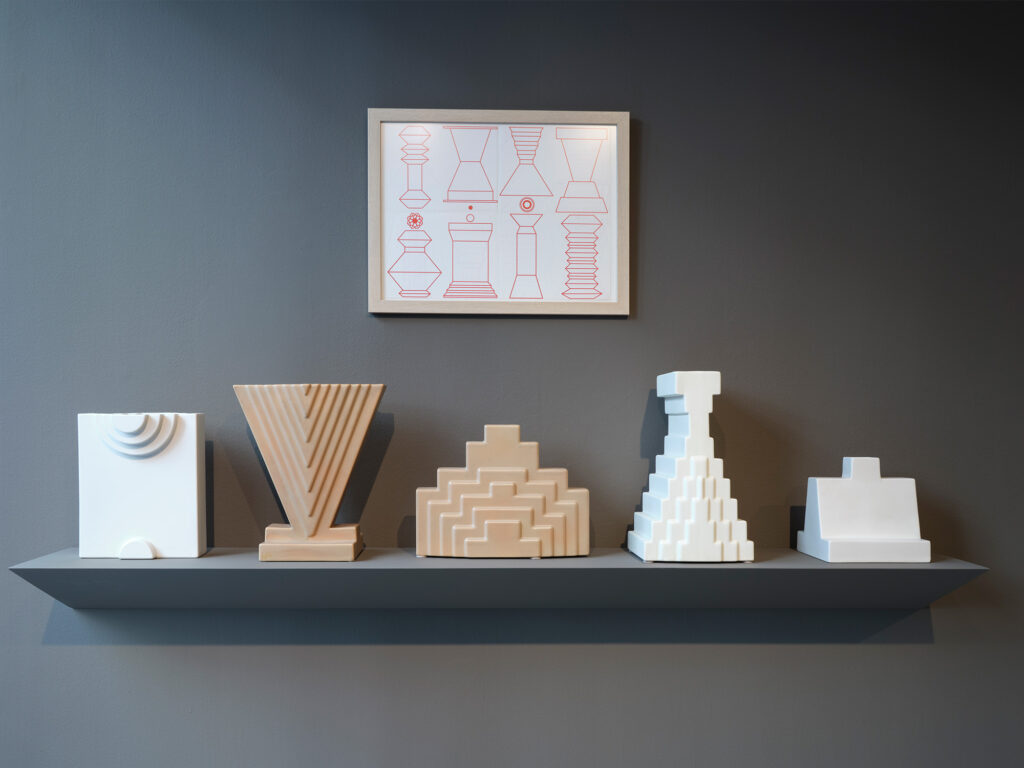
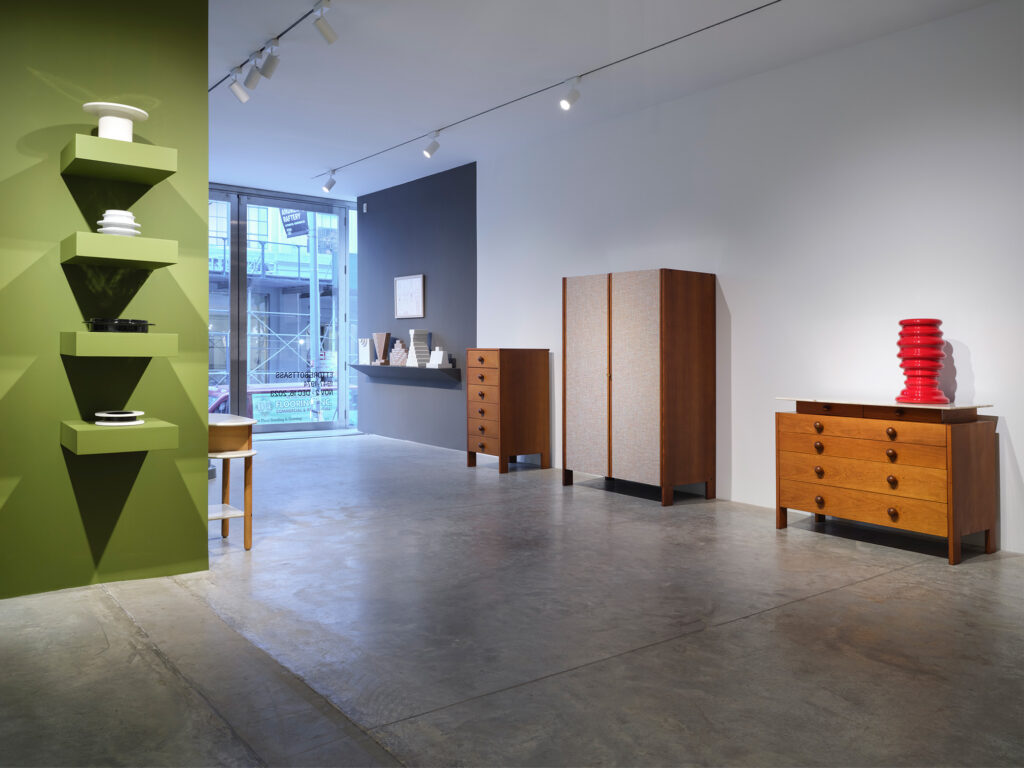
ABOUT ETTORE SOTTSASS
Born in Innsbruck, Austria in 1917 and raised in Turin, Sottsass graduated from Turin University in 1939 with a degree in Architecture. Immediately upon graduation, he was drafted into the Italian army during WWII. In the early part of his career spanning six decades, Sottsass moved skillfully between industrial design and independent experimentation. His bright red Valentine portable typewriter (1968) is only one well known example from a huge range of products he realized for his most important corporate client, the office goods manufacturer Olivetti for whom he also realized prescient designs for computing workstations. During this time he was creating ceramics and furniture of great spiritual intensity, synthesizing modernist abstraction with forms from ancient cultures.
This syncretic approach, at once progressive and primordial, informed his contribution to the seminal exhibition Italy: The New Domestic Landscape at the Museum of Modern Art in 1972, and his involvement in a number of avant garde groups and projects, including Global Tools, Studio Alchimia, and the Milanese avant garde project Memphis, which he founded in 1981. Through his design firm Sottsass Associati he also maintained a practice as a product designer, for Alessi among others, and as an architect, in a series of retail spaces for Esprit as well as private residences.
In the last fifteen years of his life, Sottsass achieved a new level of heightened craftsmanship moving away from the industrial materials and methods that were his focus for the majority of his career. During this time, he realized bodies of work marked by an appreciation for rarefied materials—from blown-glass and ceramic objects to large-scale wooden and metal cabinets. Informed by his careful observation of design traditions and mastery of form and proportion, each work continued his exploration into the social and cultural implications of contemporary design that characterized his career.
Through these diverse activities, Sottsass established a distinctive and expansive design vocabulary, composed of seeming oppositions up until his death. His work is extraordinarily deep in its cultural references, yet delighted in a beguiling play of surfaces. Sottsass’ abstractions had latent anthropomorphism; his forms are both playful and monumental. The dialectical complexity of his thought—grounded in the idea that design can have an remarkable range of expression—was revolutionary. Sottsass left behind a prolific compilation of essays and scholarship, all of which continue to influence designers around the world today.
Sottsass’ work can be found in the permanent collections of numerous international museums, including the Centre Pompidou, Paris; Corning Museum of Glass, NY; Los Angeles County Museum of Art, CA; M+ Museum, Hong Kong, Metropolitan Museum of Art, New York, NY; Museum of Fine Arts, Houston, TX; Philadelphia Museum of Art, PA; Stedelijk Museum, Amsterdam; and Victoria & Albert Museum, London. Sottsass died in 2007 in Milan, Italy.
